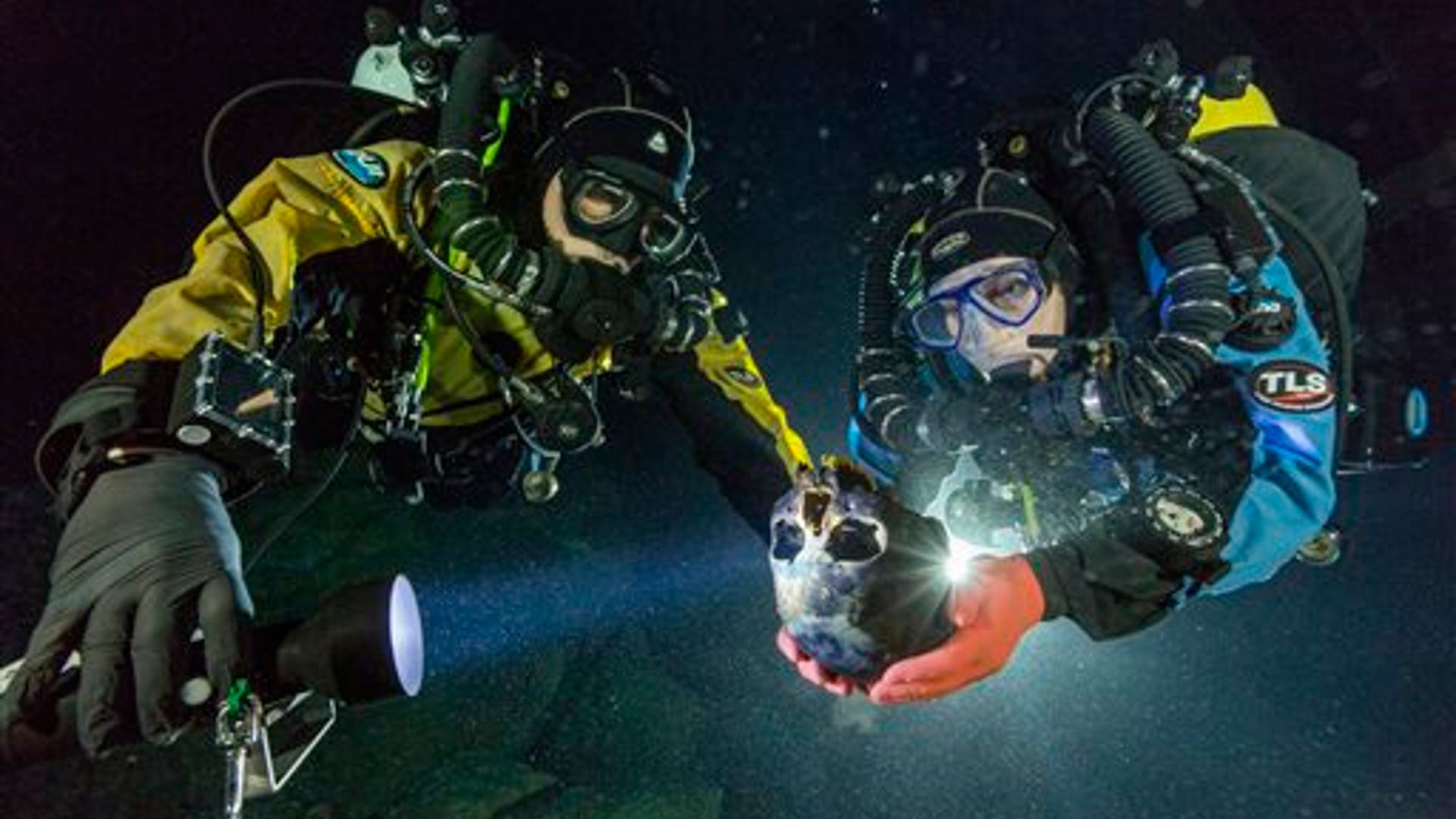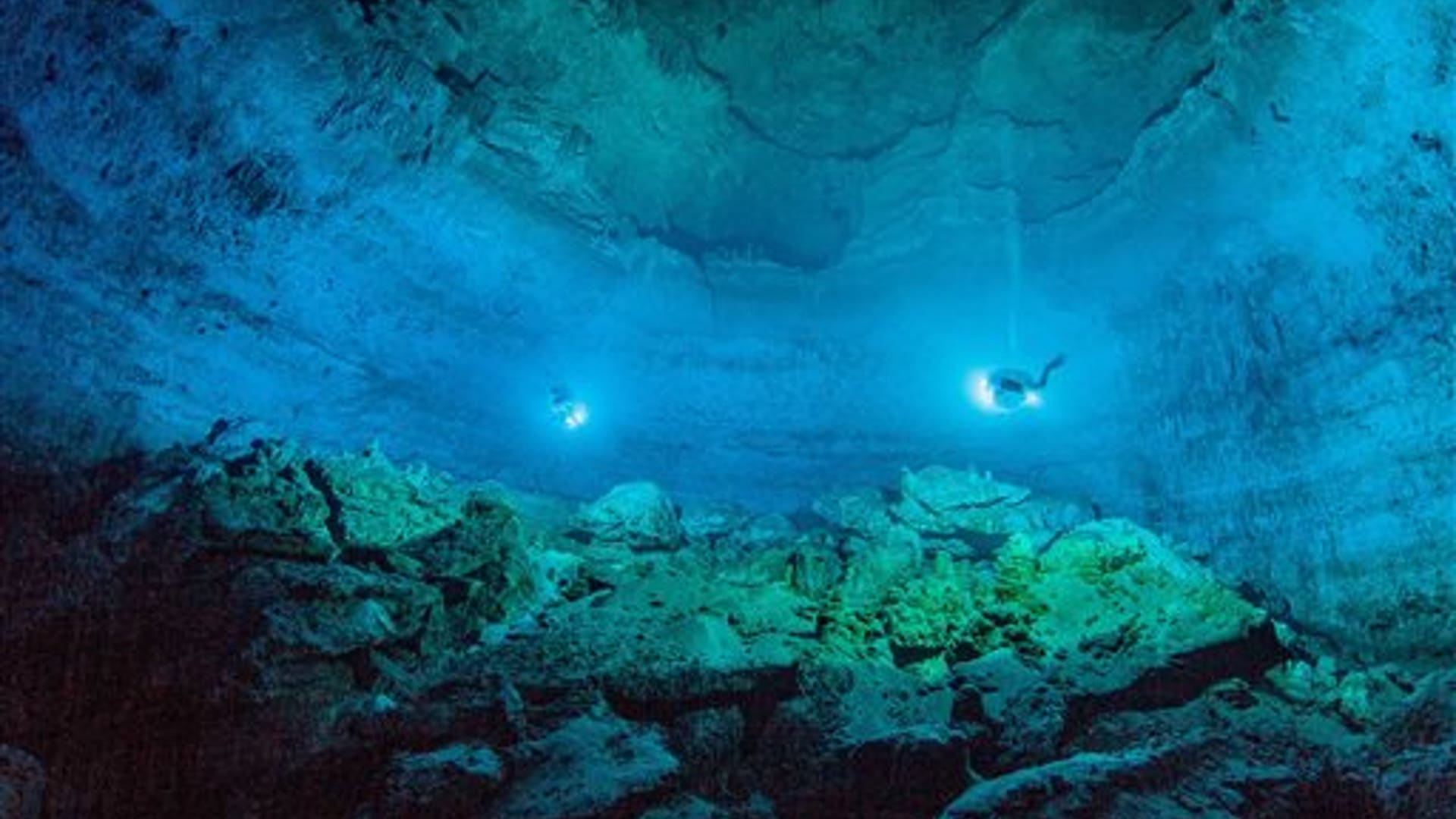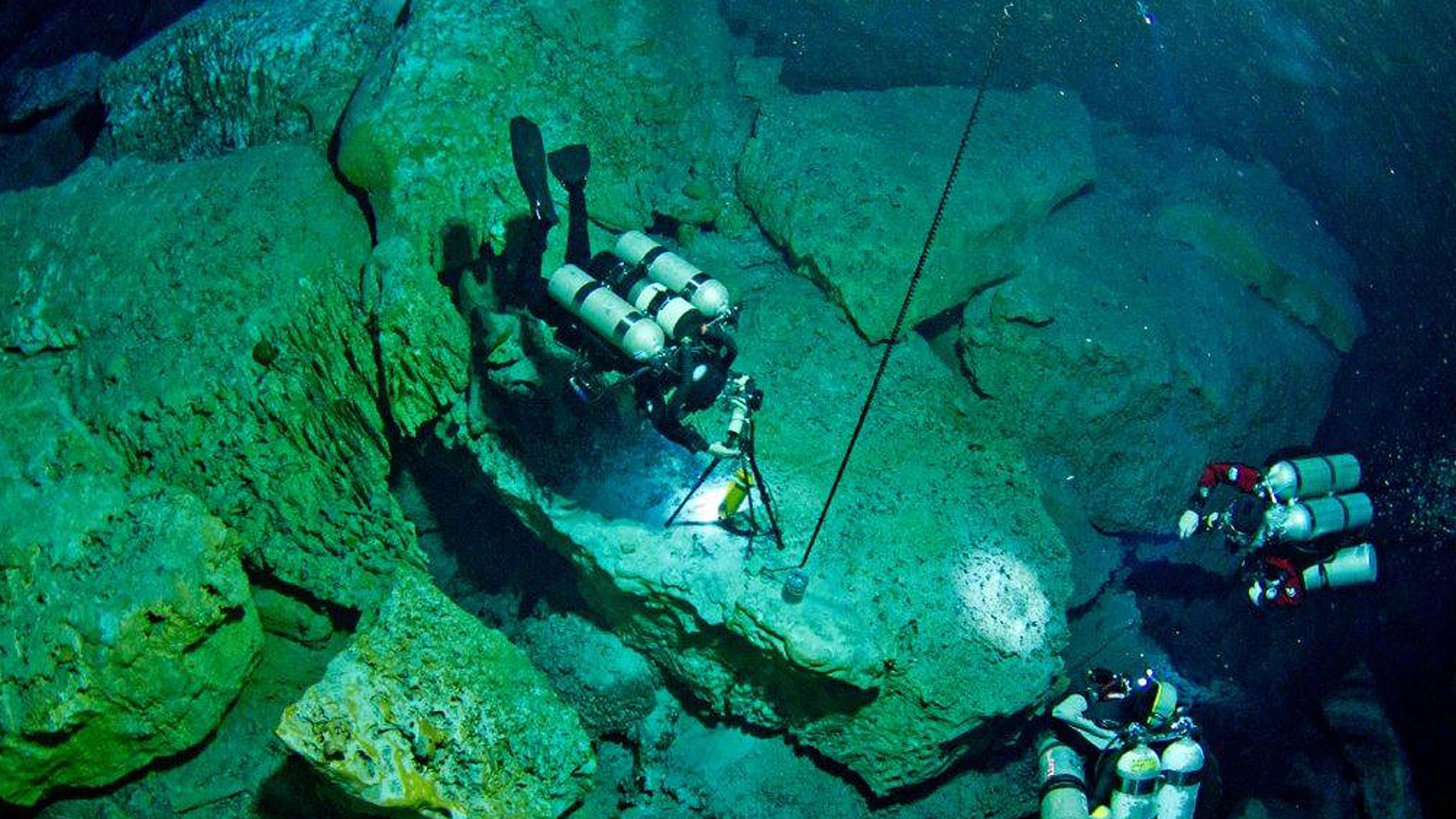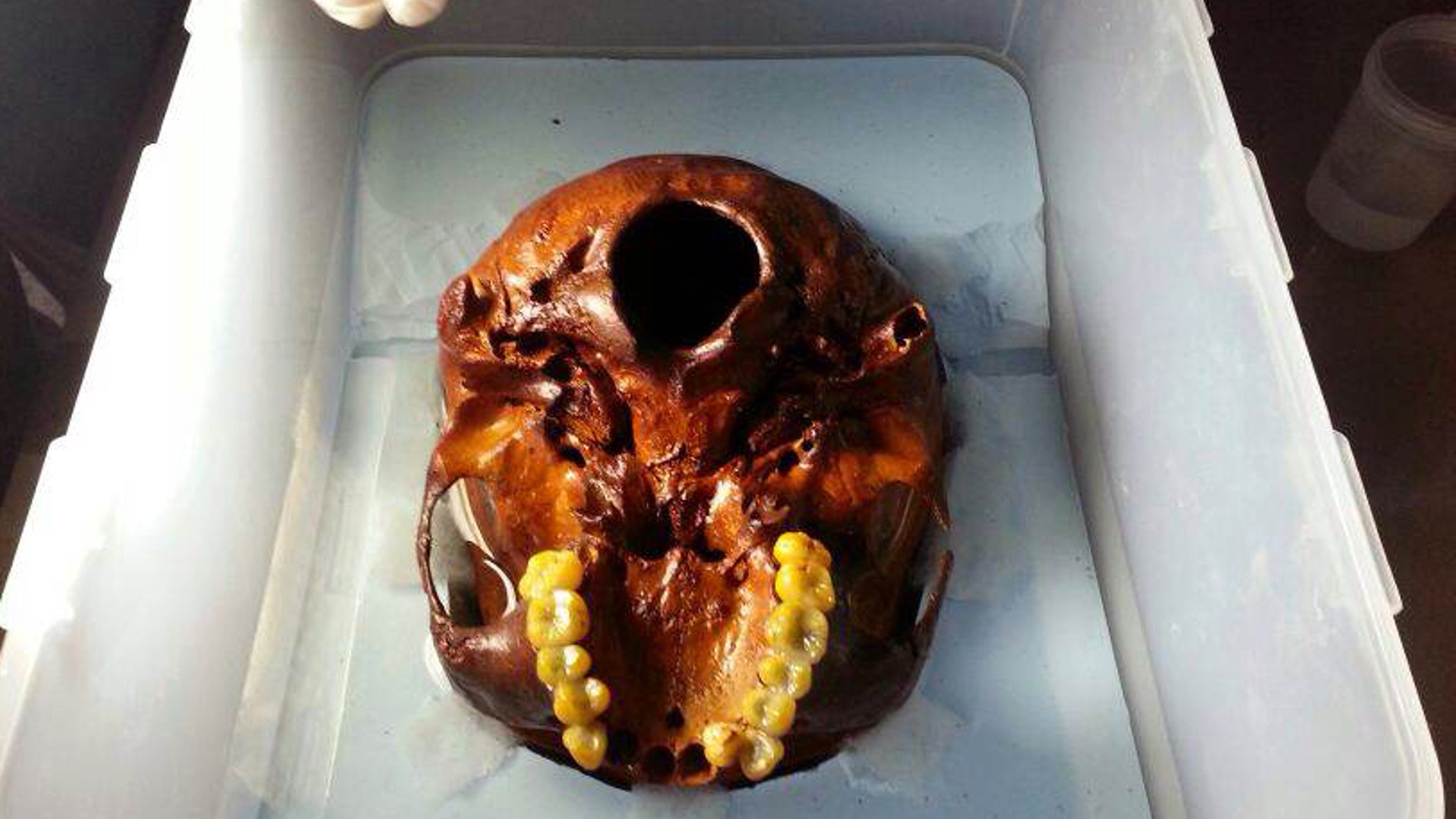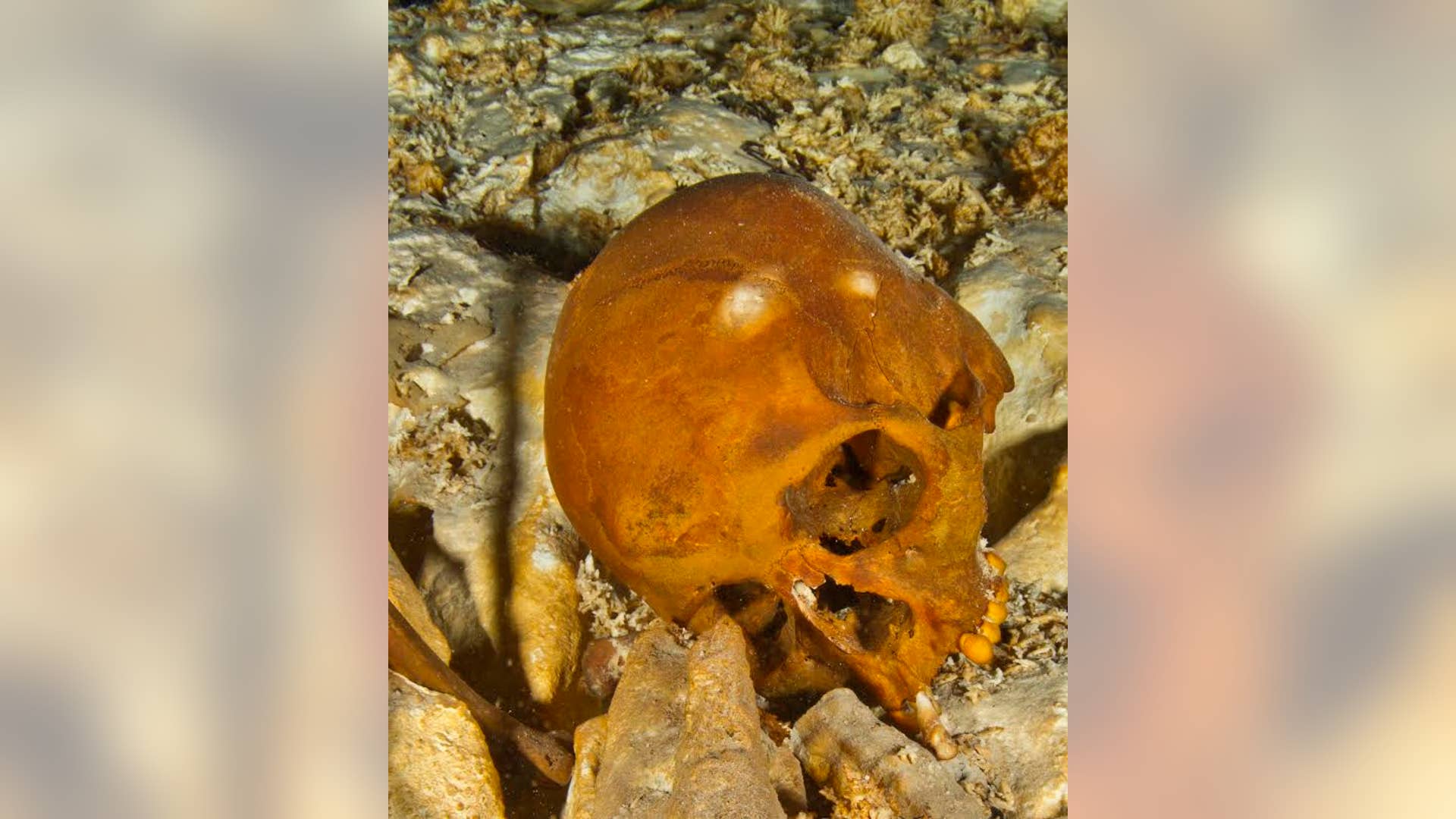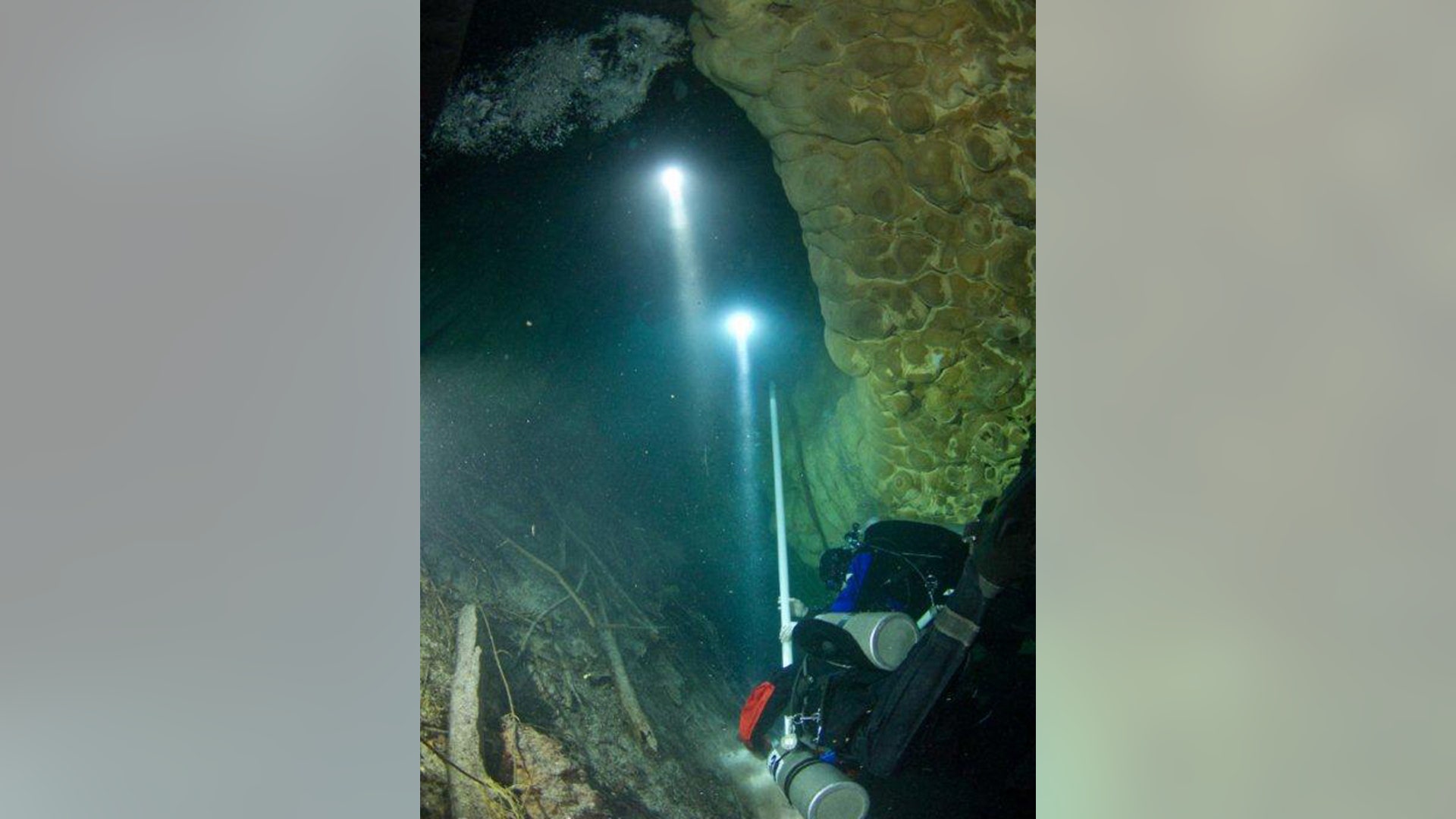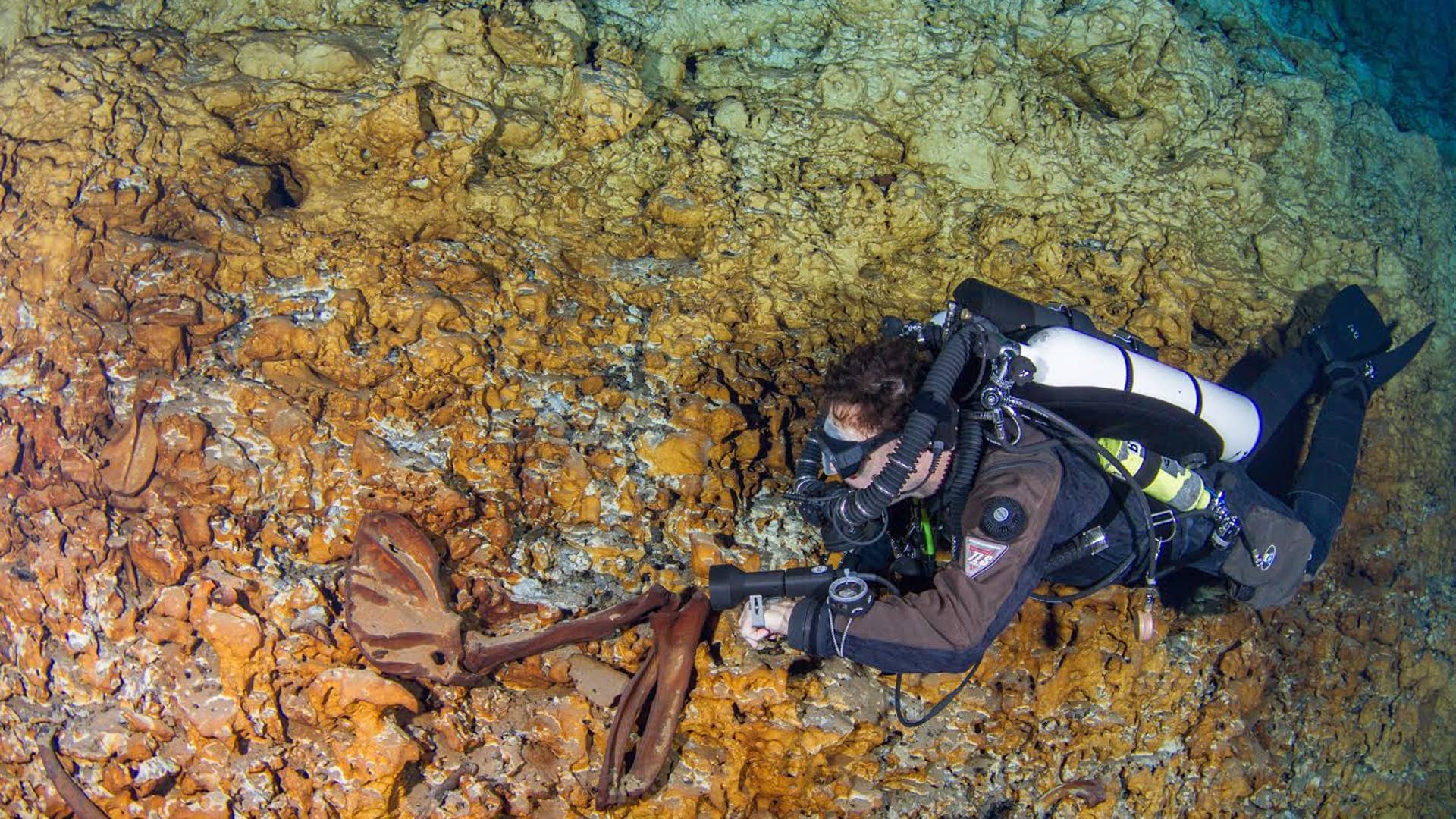Move Back
ADVERTISEMENT
Skip- Published9 Images
Prehistoric Skeleton Found In Mexico Sheds Light On First Americans
The skeleton of a teenage girl who lived 12,000 to 13,000 years earlier is helping scientists study the origins of the first Americans.
![first_americas_3]() In this June 2013 photo provided by National Geographic, diver Susan Bird, working at the bottom of Hoyo Negro, a large dome-shaped underwater cave in Mexico's Yucatan Peninsula, brushes a human skull found at the site while her team members take detailed photographs. Thousands of years ago, a teenage girl fell into this deep hole and died. Now, her skeleton and her DNA are helping scientists study the origins of the first Americans. An analysis of her remains was released Thursday, May 15, 2014 by the journal Science. Her DNA links her to an ancient land bridge connecting Asia and North America, and suggests she shares ancestors with the modern native peoples of the Americas. (AP Photo/National Geographic, Paul Nicklen)read more
In this June 2013 photo provided by National Geographic, diver Susan Bird, working at the bottom of Hoyo Negro, a large dome-shaped underwater cave in Mexico's Yucatan Peninsula, brushes a human skull found at the site while her team members take detailed photographs. Thousands of years ago, a teenage girl fell into this deep hole and died. Now, her skeleton and her DNA are helping scientists study the origins of the first Americans. An analysis of her remains was released Thursday, May 15, 2014 by the journal Science. Her DNA links her to an ancient land bridge connecting Asia and North America, and suggests she shares ancestors with the modern native peoples of the Americas. (AP Photo/National Geographic, Paul Nicklen)read more![first_americas_4]() In this June 2013 photo provided by National Geographic, divers Alberto Nava and Susan Bird transport the Hoyo Negro skull to an underwater turntable so that it can be photographed to create a 3-D model in an underwater cave in Mexico's Yucatan Peninsula. Thousands of years ago, a teenage girl fell into this deep hole and died. Now, her skeleton and her DNA are helping scientists study the origins of the first Americans. An analysis of her remains was released Thursday, May 15, 2014 by the journal Science. Her DNA links her to an ancient land bridge connecting Asia and North America, and suggests she shares ancestors with the modern native peoples of the Americas. (AP Photo/National Geographic, Paul Nicklen)read more
In this June 2013 photo provided by National Geographic, divers Alberto Nava and Susan Bird transport the Hoyo Negro skull to an underwater turntable so that it can be photographed to create a 3-D model in an underwater cave in Mexico's Yucatan Peninsula. Thousands of years ago, a teenage girl fell into this deep hole and died. Now, her skeleton and her DNA are helping scientists study the origins of the first Americans. An analysis of her remains was released Thursday, May 15, 2014 by the journal Science. Her DNA links her to an ancient land bridge connecting Asia and North America, and suggests she shares ancestors with the modern native peoples of the Americas. (AP Photo/National Geographic, Paul Nicklen)read more![first_americas_2]() In this June 2013 photo provided by National Geographic, divers make their way toward Hoyo Negro, an underwater cave in Mexico's Yucatan Peninsula where the remains of "Naia," a teenage girl who lived 12,000 to 13,000 years earlier, were found. Her skeleton and her DNA are helping scientists study the origins of the first Americans. An analysis of her remains was released Thursday, May 15, 2014 by the journal Science. Her DNA links her to an ancient land bridge connecting Asia and North America, and suggests she shares ancestors with the modern native peoples of the Americas.(AP Photo/National Geographic, Paul Nicklen)read more
In this June 2013 photo provided by National Geographic, divers make their way toward Hoyo Negro, an underwater cave in Mexico's Yucatan Peninsula where the remains of "Naia," a teenage girl who lived 12,000 to 13,000 years earlier, were found. Her skeleton and her DNA are helping scientists study the origins of the first Americans. An analysis of her remains was released Thursday, May 15, 2014 by the journal Science. Her DNA links her to an ancient land bridge connecting Asia and North America, and suggests she shares ancestors with the modern native peoples of the Americas.(AP Photo/National Geographic, Paul Nicklen)read more![first_americas_1]() In this Oct. 25, 2013 photo made available by Roberto Chavez Arce, divers use lights to illuminate Hoyo Negro, an underwater cave in Mexico's Yucatan Peninsula where the remains of "Naia," a teenage girl who lived 12,000 to 13,000 years earlier, were found. Her skeleton and her DNA are helping scientists study the origins of the first Americans. An analysis of her remains was released Thursday, May 15, 2014 by the journal Science. Her DNA links her to an ancient land bridge connecting Asia and North America, and suggests she shares ancestors with the modern native peoples of the Americas. (AP Photo/Roberto Chavez Arce via Science)read more
In this Oct. 25, 2013 photo made available by Roberto Chavez Arce, divers use lights to illuminate Hoyo Negro, an underwater cave in Mexico's Yucatan Peninsula where the remains of "Naia," a teenage girl who lived 12,000 to 13,000 years earlier, were found. Her skeleton and her DNA are helping scientists study the origins of the first Americans. An analysis of her remains was released Thursday, May 15, 2014 by the journal Science. Her DNA links her to an ancient land bridge connecting Asia and North America, and suggests she shares ancestors with the modern native peoples of the Americas. (AP Photo/Roberto Chavez Arce via Science)read more![Ancient_skeleton___4_]()
![Ancient_skeleton___5_]()
![Ancient_skeleton___1_]()
![Ancient_skeleton___6_]()
![Ancient_skeleton___3_]()
- Published9 Images
Prehistoric Skeleton Found In Mexico Sheds Light On First Americans
The skeleton of a teenage girl who lived 12,000 to 13,000 years earlier is helping scientists study the origins of the first Americans.
Move Forward
- Prehistoric Skeleton Found In Mexico Sheds Light On First Americans









Thumbnail View
Image 0 of 9

